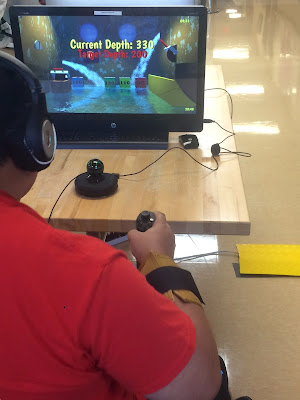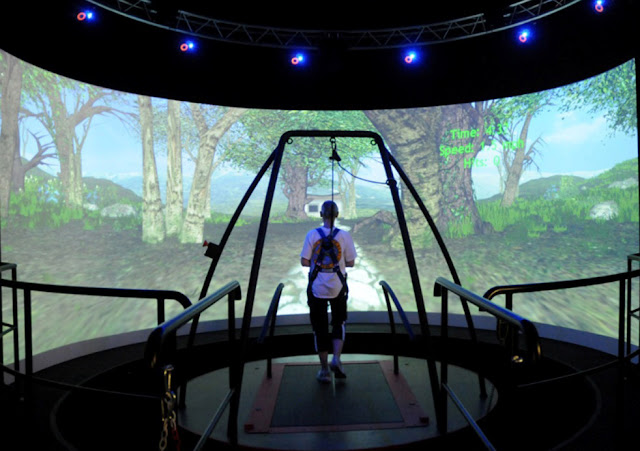New tools make previously impossible research and treatment a (virtual) reality
By Christopher Austin
Our nation’s wounded warriors often face a long road of rehabilitation as they return home with life-altering injuries. But in the face of these challenges, they will have the help of clinicians and researchers who are breaking new ground to help ease their adjustment, and provide a new understanding of the potential for using advanced technology in rehabilitation.
 |
| A patient uses the BrightBrainer to play one of a variety of games that use motion controls to allow them to test a variety of factors like dexterity and cognition. (Image credit: courtesy photo) |
The Computer Assisted Rehabilitation Environment (CAREN), a VR experience that consists of a multi-directional treadmill in front of a large curved display, is one such system and one of only a dozen in the U.S. (the nearby National Intrepid Center of Excellence also has one). Users are secured to the treadmill with harnesses and given scenarios within a virtual environment that are projected onto the screen in front of them, which they maneuver through by walking on the treadmill. The treadmill can change orientation as the environment dips, rises, and swivel to challenge users with uncertain footing.
In addition to allowing patients to safely test themselves in a controlled environment as a part of their therapy, the CAREN also allows therapists and physicians to gather unique data on the users thanks to motion-capture cameras stationed around the treadmill platform. This information gives researchers a tool in understanding how lower foot and leg trauma can impact service members, and help patients to return to active duty or the civilian community.
Another system that faculty are using is the Gait Lab. Service members with lower limb injuries or amputations use it to analyze how their body moves through the placement of multiple sensors on their bodies. The sensors are picked up by motion capture cameras stationed around the wide, open room of the lab. While not at the same level of interactivity as the other systems, it is still a highly advanced tool in analyzing the movement capabilities of patients. Faculty are able to construct a virtual, 3-D wire-frame recording of the service member in motion by having them perform simple exercises like walking in a straight line. This can be used by the patients and their therapists to see how their injuries have impacted how they get around. With this information, they can begin working on therapies that will allow the patient to further regain their mobility in a safe and productive way.
The classic therapist/patient relationship will never go out of style, but new technology and research are working to help restore a better quality of life to injured service members.






